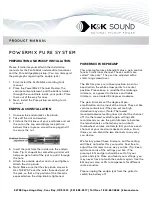
the Main Unit’s 10/100/1000 LAN Test jack (green bordered jack)
directly into the device (use the supplied straight thru patch cable) and
verify the equipment’s Device Type (i.e. is it a hub/switch or PC?); its
maximum speed (10,100,1000 MB/s); duplex (full, half); and if PoE* is
available for any devices that might require it. This provides a wealth
of information: It verifies that the device is ON (i.e. it is transmitting);
the speed and duplex of the device; the Device Type (i.e. does a PC
port appear as a PC port?); and if PoE* is there.
Phase III. Using the TVR1000 when connecting the cabling to the
hubs, switches and PCs.
With the cabling verified (Phase I) and the
hubs, switches and PCs checked out (Phase II), all that remains is 1)
getting the equipment communicating and 2) verifying each LAN link is
performing at the speed and duplex expected. To do this, use the Main
Unit's
inline
capability: The
inline
feature (using the 10/100/1000 LAN
TESTS jacks) allows you to connect in between any two LAN devices
and display the negotiated speed and duplex of the two devices. If the
two devices fail to communicate, use the same jacks to simulate a
straight thru and crossover cable. See test examples 1 and 2 in Section
VI for more detail about
inline
testing.
*What is PoE?
Power supplied to network devices over the CAT5/6
cable is named Power over Ethernet (PoE). Many VoIP phones, IP
cameras and access points are powered by PoE (instead of requir-
ing an AC outlet). See page 15 for further description.
7










































